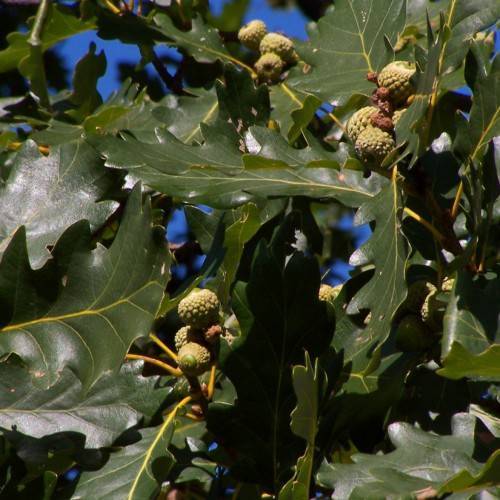
oak
Quercus dalechampii
Cycle:
Perennial
Watering:
Average
Hardiness Zone:
5 - 8
Flowers:
Flowers
Sun:
Full sun
Leaf:
Yes
Growth Rate:
Low
Maintenance:
Low
Drought Tolerant:
Yes
Salt Tolerant:
Yes
watering
Oak (Quercus dalechampii) plants need approximately 1 inch of water a week; split into 2 waterings. Water the plants in the morning so the foliage has time to dry out before nightfall. During the summer months, if the temperatures are higher, increase the watering to 1 1/2 inches a week split into 2 waterings. Should the temperatures increase more, increase the watering to 2 inches a week split into 2 waterings. During the winter months, reduce the watering as your plant may not need it.
sunlight
Oak (Quercus dalechampii) grows best in areas with direct sunlight for at least 8 hours per day, preferably during the morning and late afternoon. The plant should be placed in a location that receives full sun in order to support its growth. If the area doesn't have direct sunlight for 8 hours or more, shade should be provided. Avoiding direct midday sunlight when possible will keep the oak from becoming stressed. In winter, it is important to reduce the amount of sunlight to allow the plant to enter its dormant period in order to survive. As a general rule, oak should receive no less than 4 hours of direct sunlight per day during winter. Over the summer months, the plant should receive the full 8 hours of sun exposure to promote growth and development.
pruning
Oak (Quercus dalechampii) should be pruned in late winter or early spring, when the plants are still dormant. Pruning should be done minimally - taking no more than 10-15% of the new growth away. This will help keep the shape of the oak looking natural. It’s important to never prune more than a third of the tree’s canopy, or any large, mature limbs. Pruning too much can stress the tree and can even cause it to die. After pruning, it’s important to inspect the tree for any disease or insect damage, as well as any other problems the tree may have. Pruning should always be done with care and caution, as oaks are a valuable species to protect and sustain.
